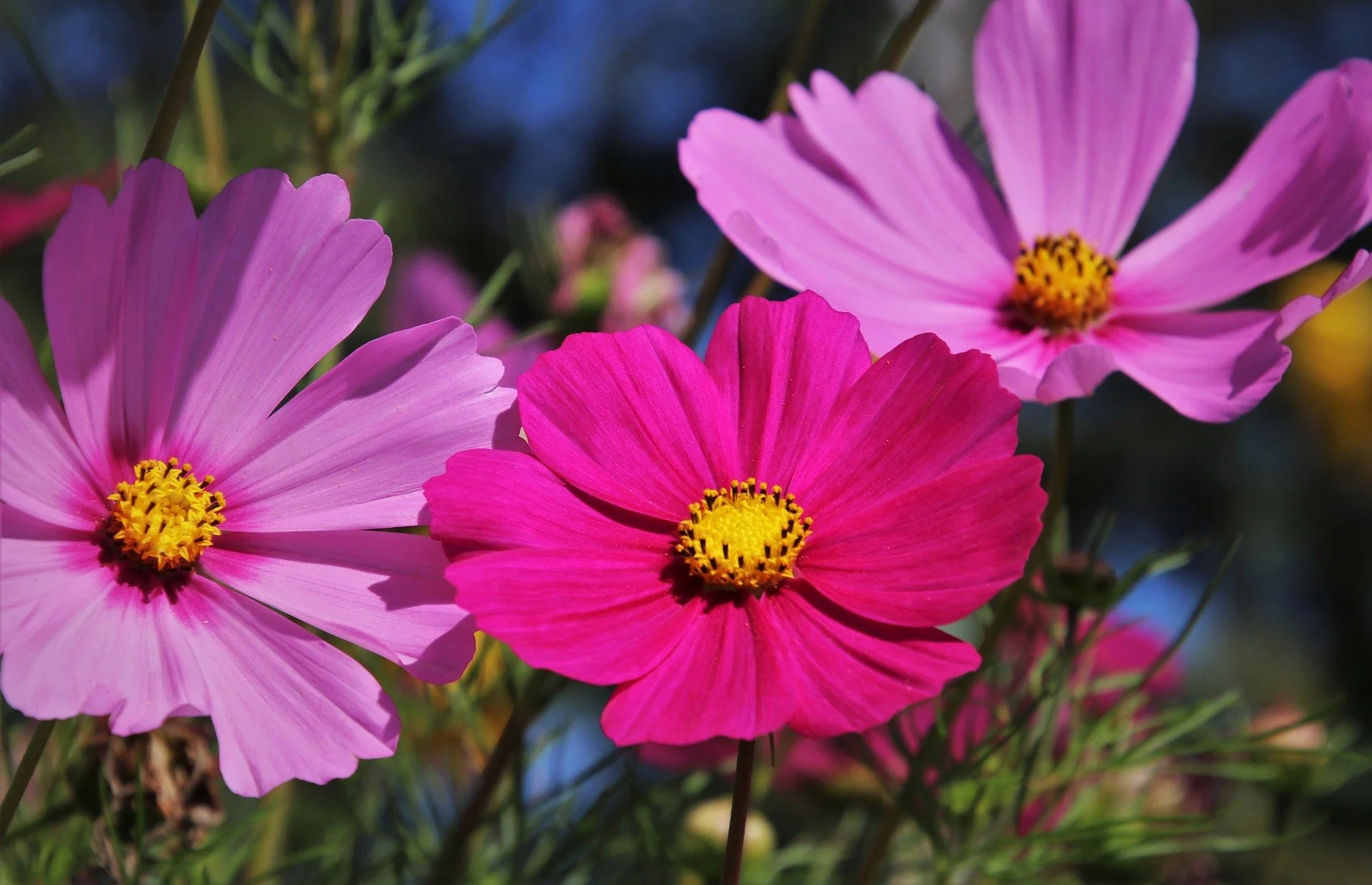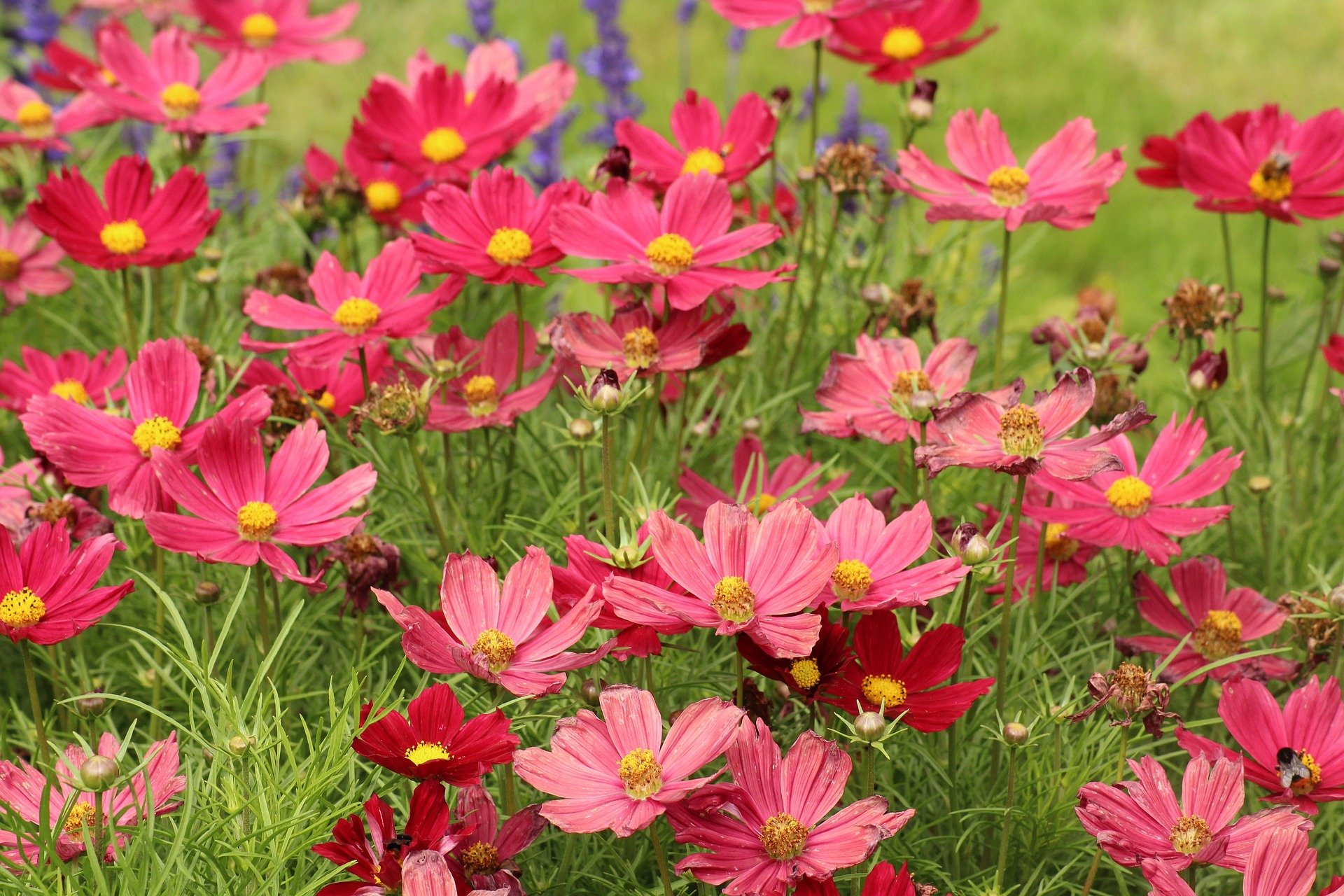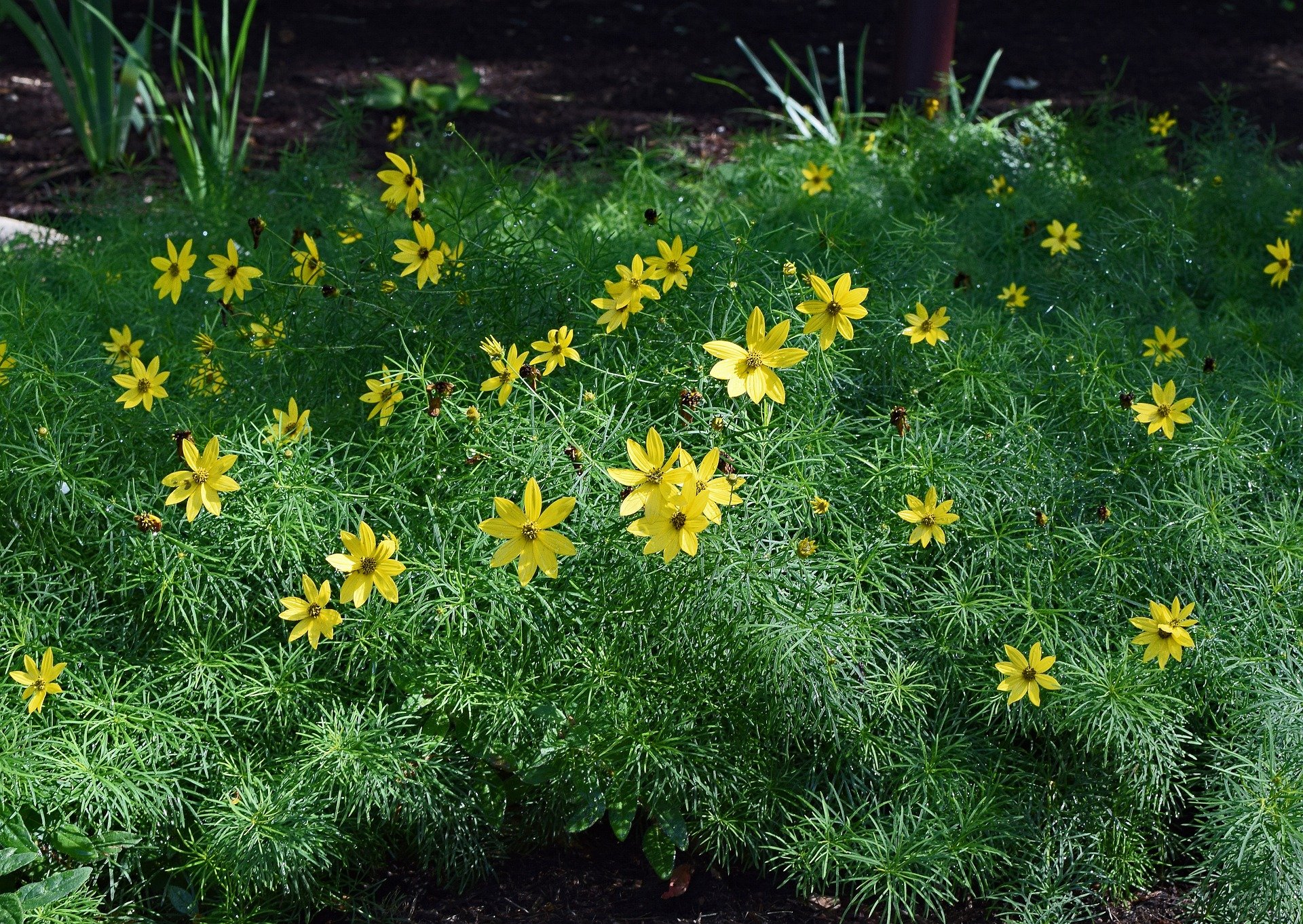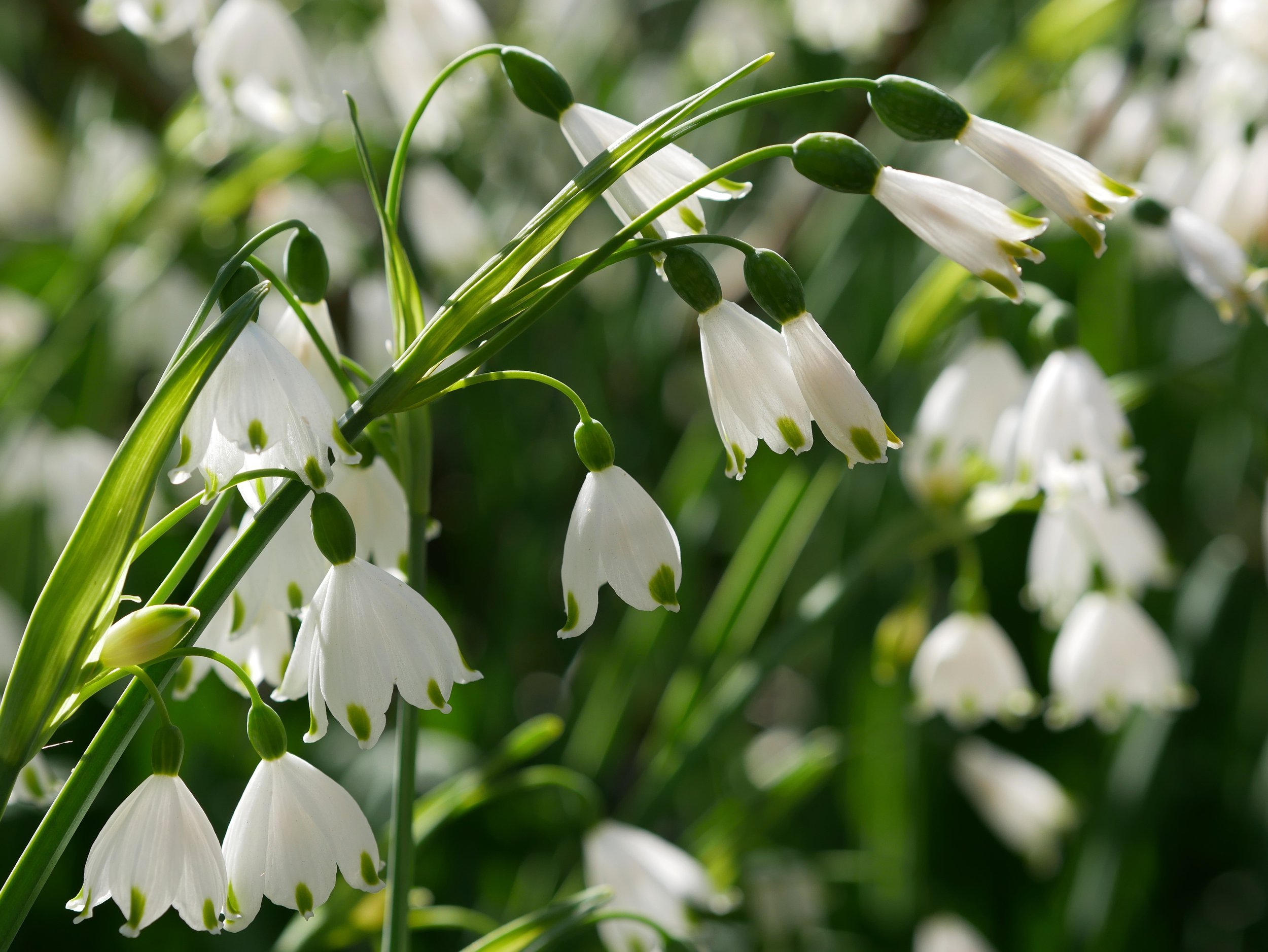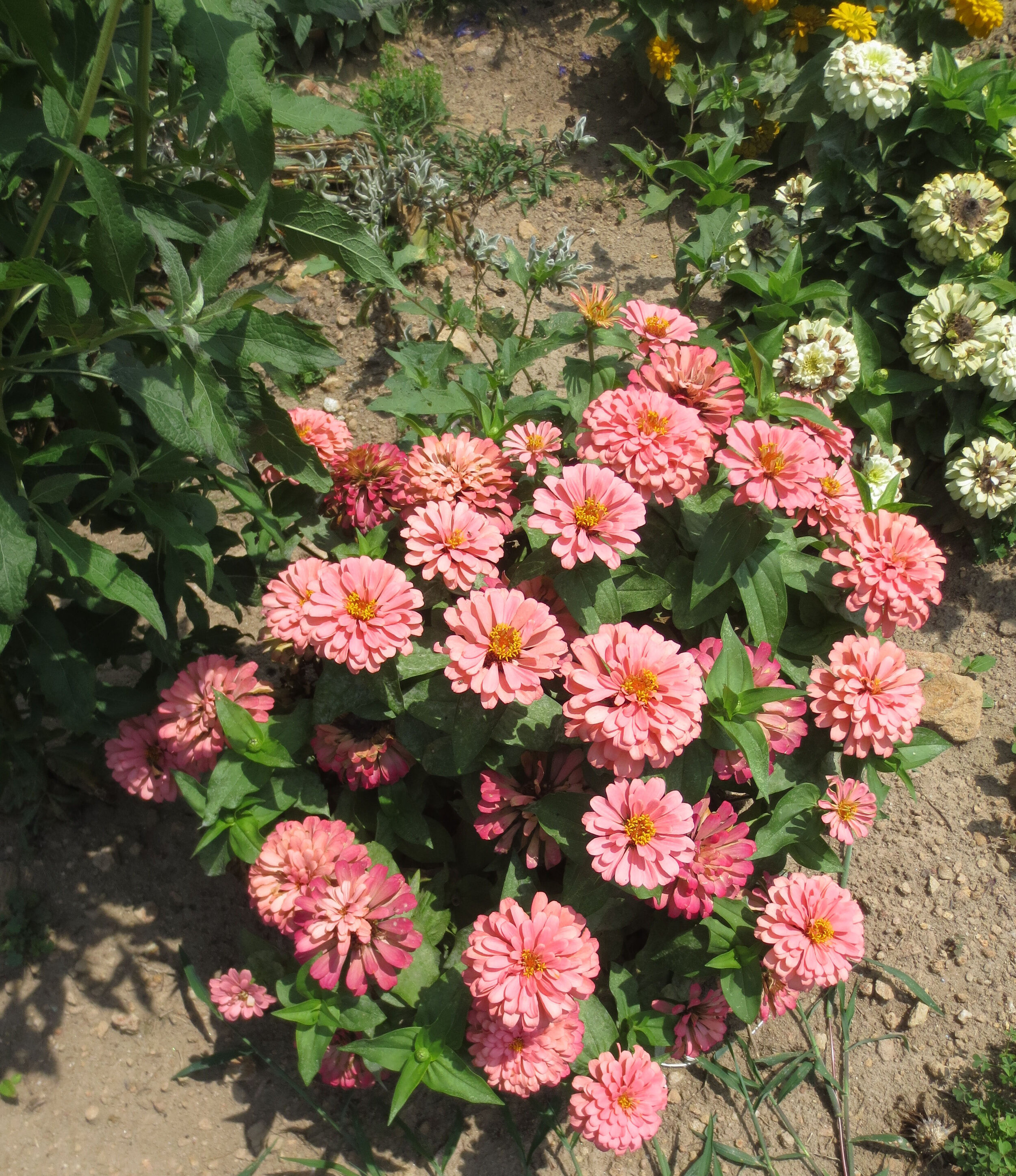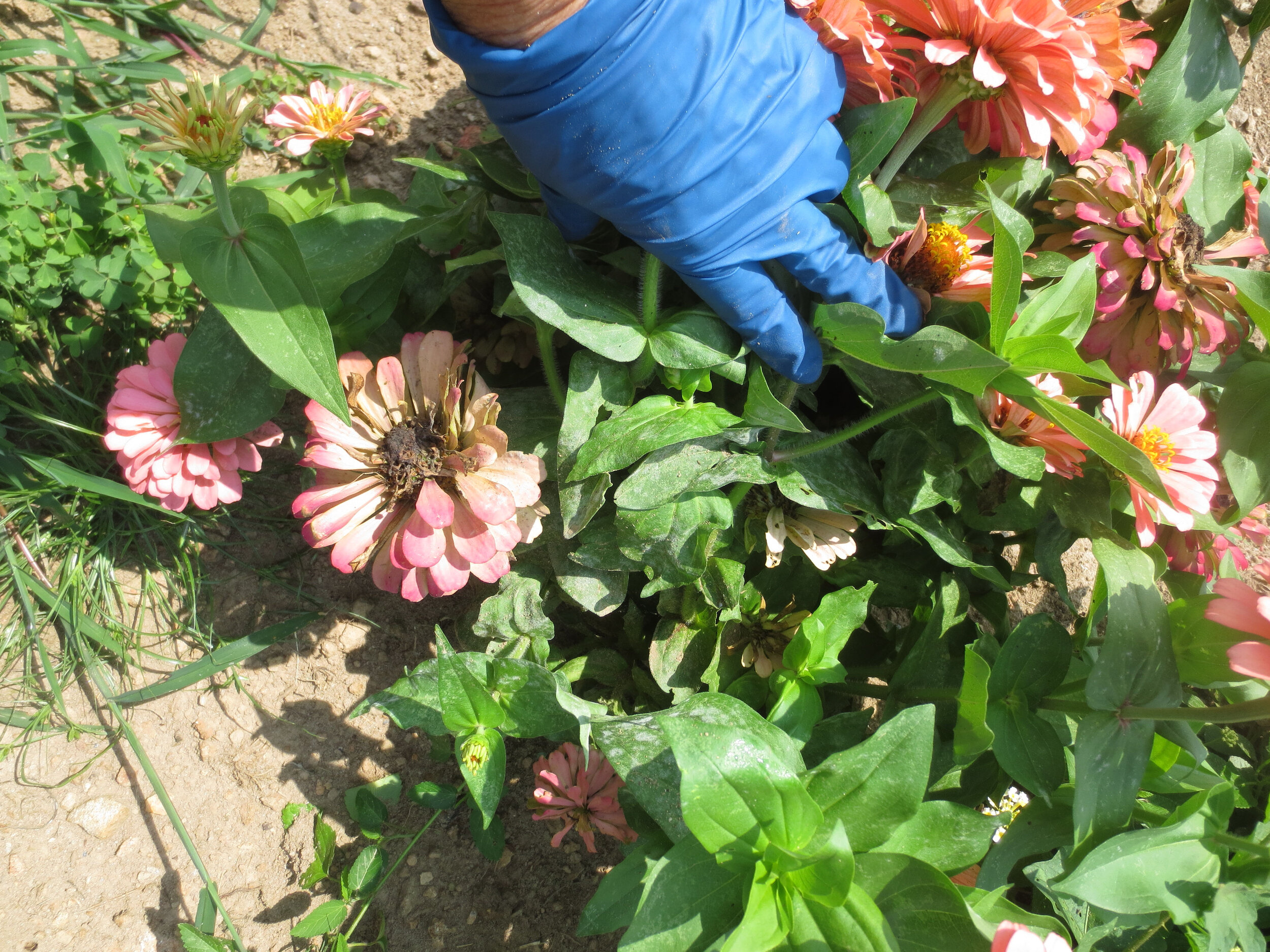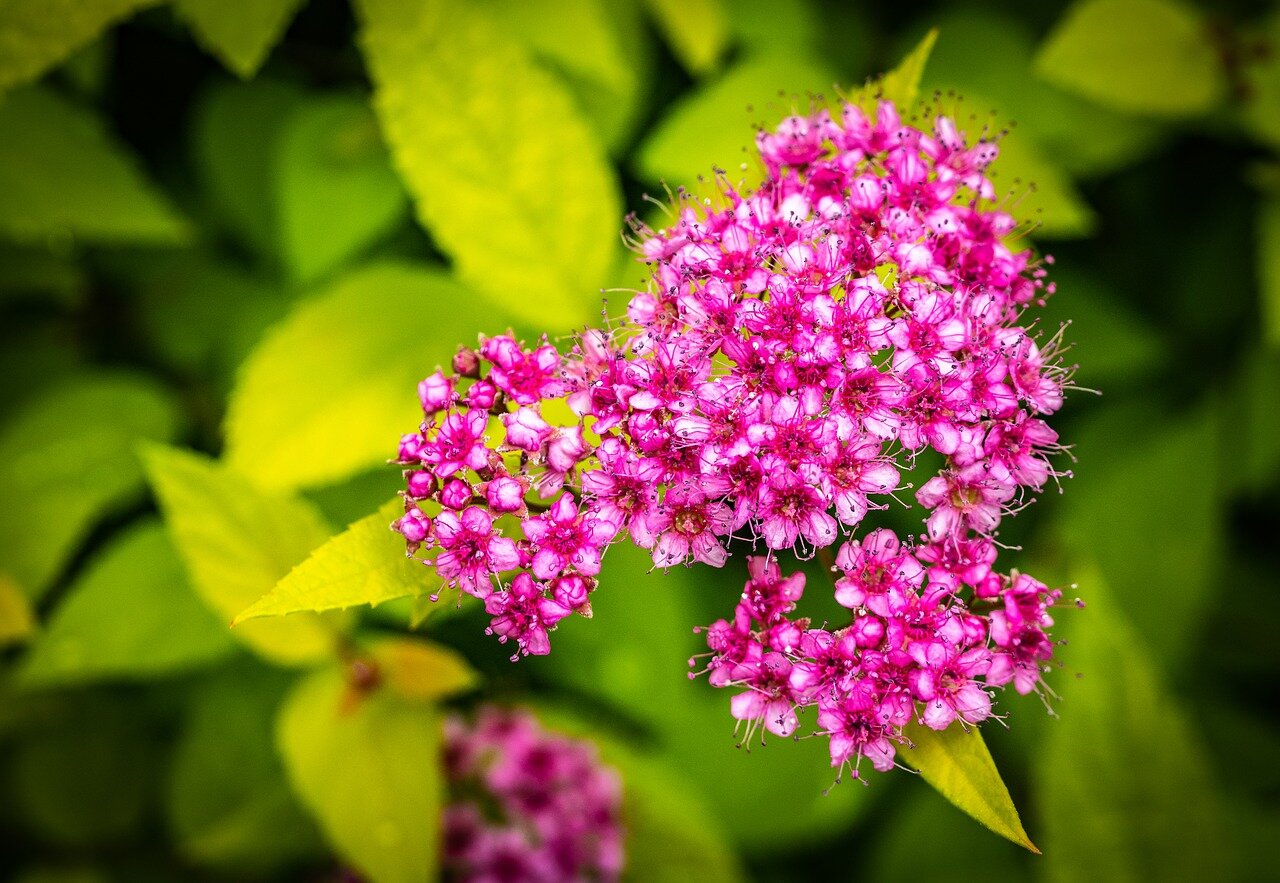Cleome (klee-OH-mee) or Spider Flower is a tall plant for the back of the border. Its pink, white, rose or purple flowers open gradually, with the spent stamens developing into long-stemmed seed pods with a spidery appearance. Young palmate leaves mimic Cannabis. Older varieties reach heights of five feet and have sharp thorns hiding along stems to surprise the unwary gardener. Newer cultivars are shorter and have been bred to be thornless.
Cleome grows fast from seed; purchased seedlings may be rootbound and not transplant well. Seeds are best planted in full sun where plants are to grow. Keep seeds moist for three weeks. Plants are heat- and drought-tolerant thereafter.
Cleome reseeds readily but is not invasive. Older stems become leggy and leafless at ground level, so it looks best when planted behind a shorter plant that will hide its base. Older varieties of Cleome flowers have an unusual, lemon-musk fragrance that is more noticeable at dusk. A few people find the scent offensive. Thornless cultivars have lost the scent, too. Flowers attract bees and Sphynx months, large insects that can be mistaken for hummingbirds. Plants are deer-resistant. They look especially nice when planted in large drifts. Self-sown seedlings are often too dense for plants to reach full size. Thin them to a spacing of 12 inches.
To avoid potential for disease, remove plants once they are killed by frost. Rotate plant locations after a few years to avoid attracting harlequin bugs, a relative of the stink bug.
This image shows Cleome buds (top), open flowers (middle) and unripe seed pods (bottom). The long, narrow pods will mature to tan before they burst open to release ripe seeds. Each one of the pods contains 10-15 seeds. Remove the unripe pods if you want to prevent reseeding.
White Cleome pairs well with almost any other flowers



